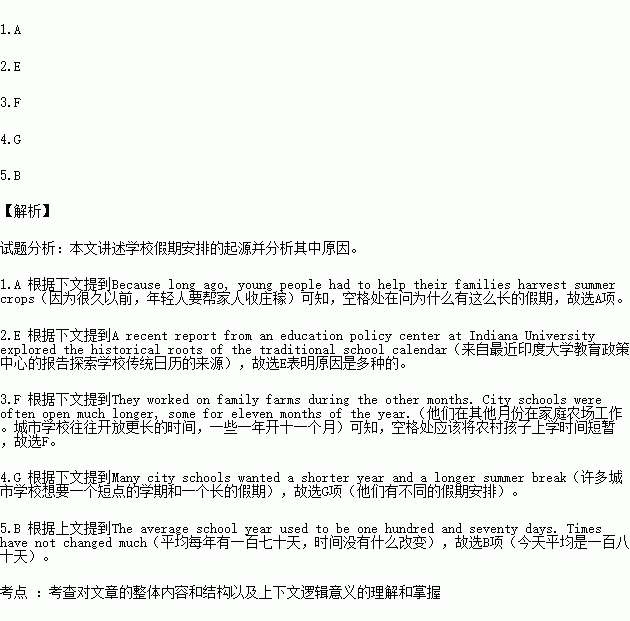题目内容
The traditional American school year begins in late August or early September.It ends in May or June, followed by summer vacation. 1.___ Because long ago, young people had to help their families harvest summer crops. At least this is what people today may think.
2.__ A recent report from an education policy center at Indiana University explored the historical roots of the traditional school calendar.
In the early days of the United States, children were not required to attend school School calendars depended on local needs. 3.__ They worked on family farms during the other months. City schools were often open much longer, some for eleven months of the year.
After the Civil War, more and more people saw the need for a system of required education.__ 4.______Many city schools wanted a shorter year and a longer summer break. The schools were often crowded. There was no modern air conditioning. Hot days would make it difficult to learn. Many rural educators, however, pushed for a longer school year. They thought it would keep children safe from industrial dangers when there were few child-labor laws.
So the traditional school calendar was a compromise (折中). The average school year used to be one hundred and seventy days. Times have not changed much. 5.___ But some experts think the traditional school calendar needs to change because the needs of the nation have changed. This thinking has led some schools to keep students in class longer.
A. Why such a long break?
B. Today the common average is one hundred and eighty days.
C. Americans think highly of their traditional school calendar.
D. Most schools had similar school calendars.
E. But the reason has more to it.
F. Students in rural areas went to school for no more than six months of the year.
G. But they had different ideas for the calendar.
 孟建平小学滚动测试系列答案
孟建平小学滚动测试系列答案

 ),并在其下面写出该加的词。
),并在其下面写出该加的词。